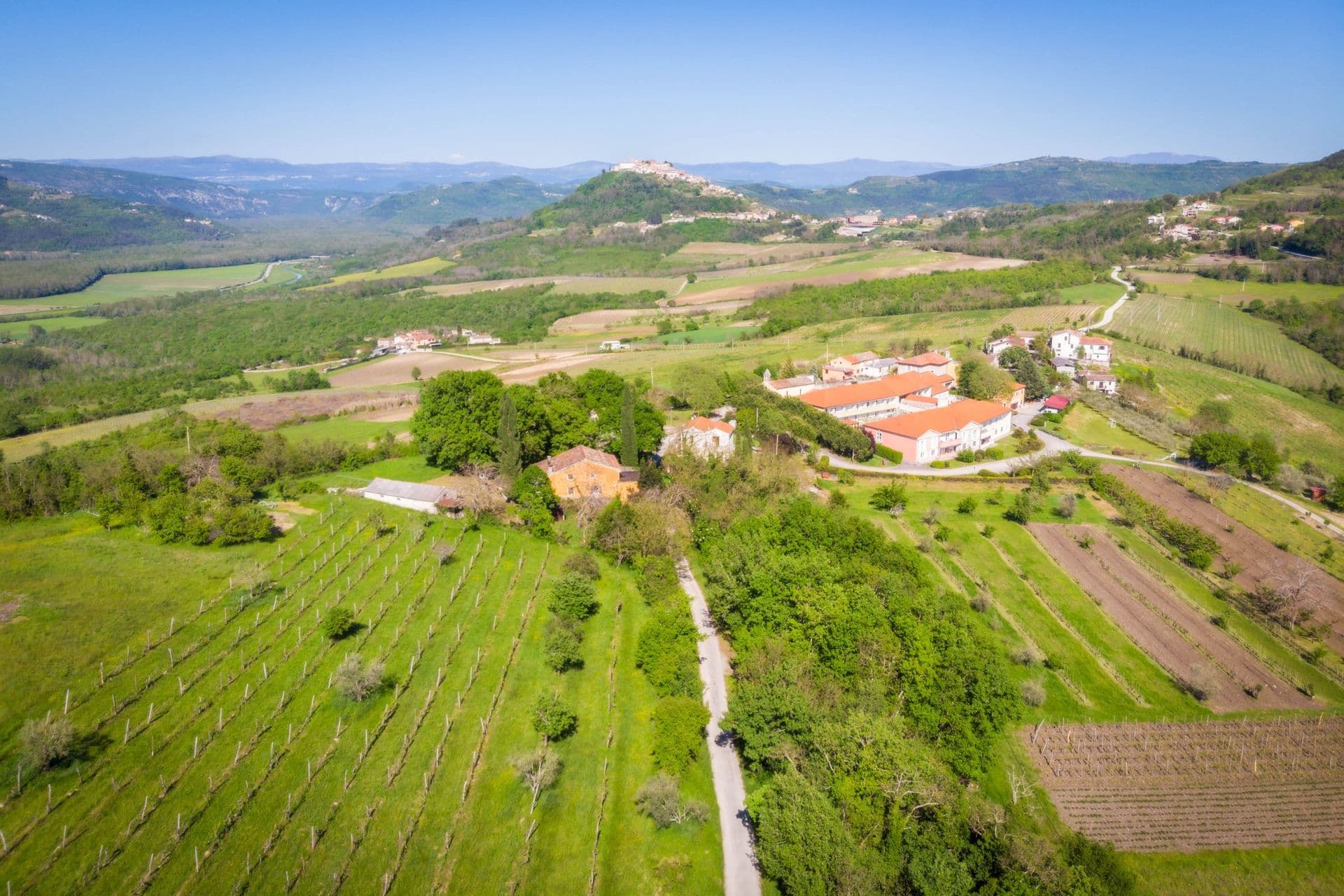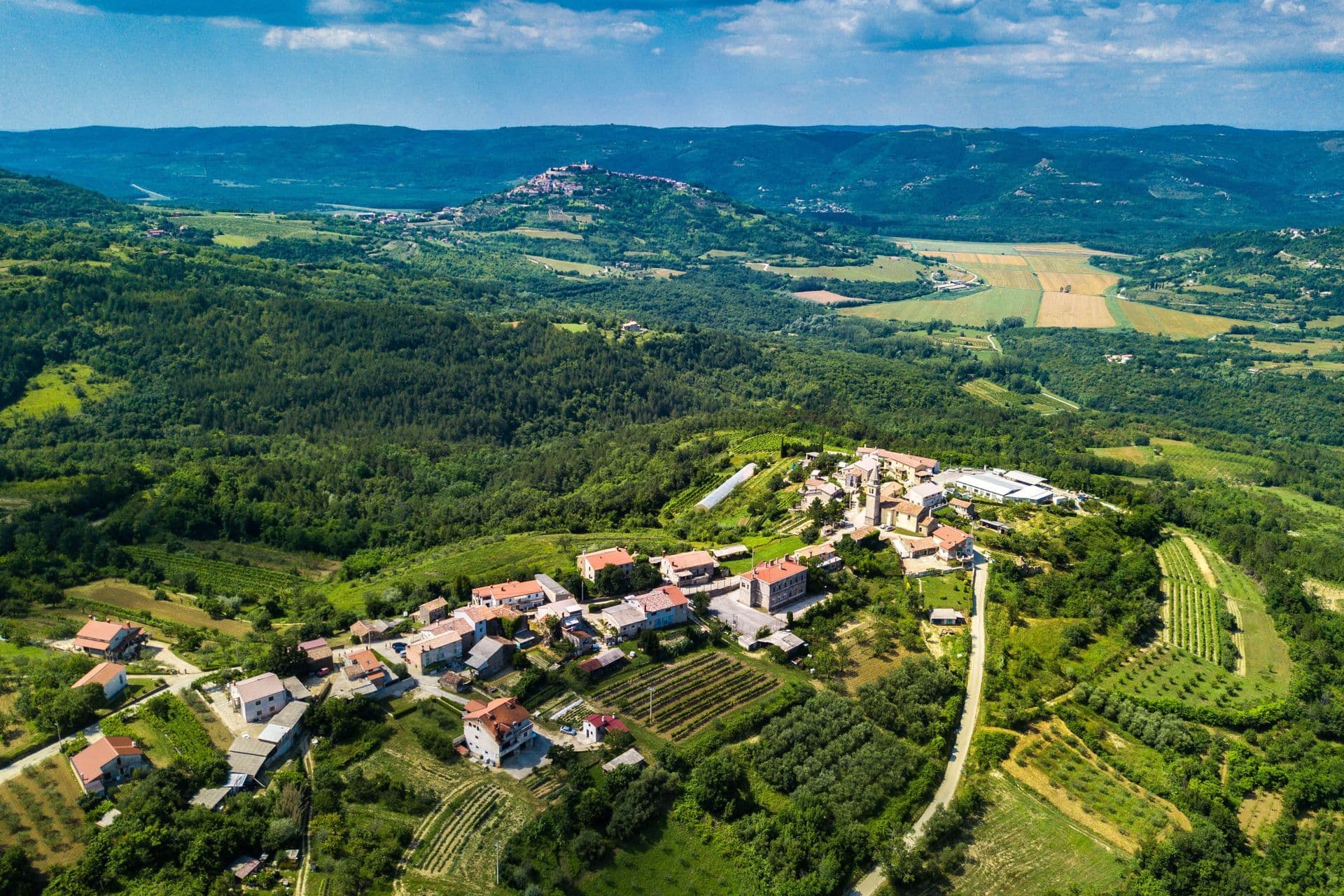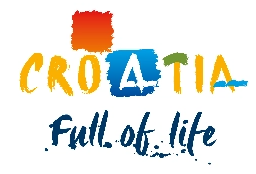




Motovun’s surroundings
The Municipality of Motovun includes the villages of Brkač, Kaldir and Sveti Bartol, and a number of hamlets, all nestled on the gently sloped hills. As this is a rural area, agriculture is the predominant activity.

Brkač
Brkač has only 200 residents, mostly farmers. In the ancient times, this area was home to a ‘villa rustica’ settlement, where clay roof tiles and ceramic products for the construction sector were produced. Where once was an old, 15th century church, now stands the Church of St Pancras, a Roman martyr and a patron saint of children. Judging by the inscription ‘1602. Pop Luka’ (1602 Priest Luke) inside the church, it was once a Glagolitic parish, and services were held in the Old Church Slavonic language.

Kaldir
The first mention of Kaldir dates back to 1258. Just like Motovun, in 1271 it fell under the rule of the Republic of Venice. In the 16th century, Kaldir was increasingly inhabited by the people from the Croatian territories occupied by the Turks, which is why the Kaldir parish was most probably established there. The Parish Church of St John the Baptist, blessed in 1875 by the Istrian Bishop Juraj Dobrila, is Kaldir’s main attraction. Sometime later, a 25-metre-tall bell tower was built next to the church. When entering Kaldir, you will see the Chapel of the Sacred Heart of Jesus, and the Church of the Holy Trinity, rebuilt in 1909. It houses a stone stoup from 1594, with a Glagolitic inscription from an older church.

Most families in the Kaldir area are farmers and fruit growers. Owing to a mild climate, the most widely grown continental fruit varieties include plums, pears, apricots, apples and peaches. As for the Mediterranean varieties, there are figs, cherries and olives. Kaldir contributes to the Istrian fruit production with a high 70%. The village is today also known for its three top wineries, and the hamlet of Štefanići is home to a widely known family farm Štefanić.
.jpg&w=3840&q=75)
Sveti Bartol
Sveti Bartol covers a number of hamlets. Owing to a specific microclimate and a favourable geographic position, the local population is mostly into farming and hemp processing. The hemp processing plant is located in the place of an old farm in Murari, and hemp is grown in the nearby fields. The village’s main attraction is the Church of St Bartholomew from the 17th century.


Destinations
Additional Information


©2025 Colours of Istria. All rights reserved. No part of this site may be reproduced without our written permission.



















.jpg&w=3840&q=75)




